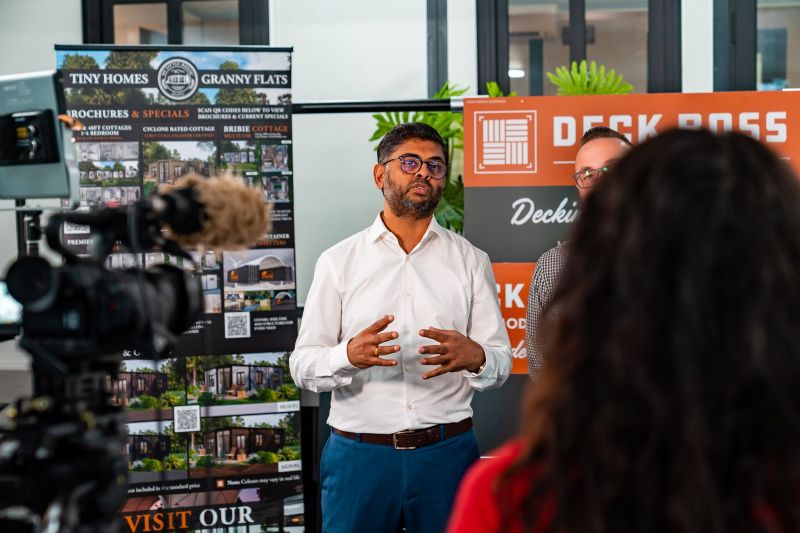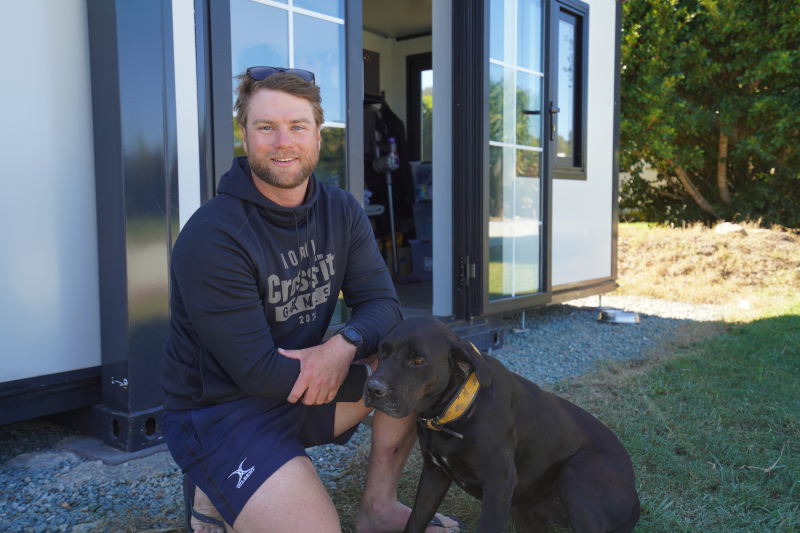Size doesn’t matter - it’s how you use it
Size doesn’t matter - it’s how you use it
(when it comes to tiny home living)
Why the tiny home movement is making big dreams a reality in Queensland
What do clear night skies, a prolific 90s rap icon and dumplings have in common with tiny living in Queensland? A heck of a lot apparently.
While tiny homes in Queensland have often been regarded as emergency, temporary accommodation or for those seeking the minimalist lifestyle, we are now seeing firsthand how tiny homes are changing the way Queenslanders think about housing, family, work, and the future.
It takes a village – how tiny homes create family hubs
Manoj Sukumaran, head of sales at My Little House, says while he initially saw a trend in his customer’s reasons for purchasing a tiny home, they continue to evolve as more Queenslanders adapt to the changing needs of family life.
‘Tiny homes are growing in popularity in Queensland. Our clients are after affordability, portability and sustainability, but most importantly, simplicity. People want to downsize and live a simple life at an affordable price, where they can move from one place to another without any big issues,’ Manoj says.’
‘What I’m seeing now though, is tiny homes are giving families the opportunity for intergenerational living on their properties. Where space and affordability have been issues before, now families are able to take care of each other while still having their elderly members living independently in a tiny home.’
No stranger to living on the same property as family, is John Bell, an ex-serving Australian Defence Force (ADF) member who recently purchased a tiny home.
‘I made the decision in January to buy a tiny home, and I haven’t looked back,’ John says.
‘I basically identified that it was quite difficult to be on a single income and make my way back into the into the rental market.
‘So, after a pretty honest conversation with family, my brother-in-law and sister gave me an opportunity. We bought the tiny home and chucked it on a hectare not far from the Brisbane CBD.’
John’s background of serving in the ADF has meant he is used to a minimalist way of living and offers his insights to those looking at living in a tiny home.
‘I’m used to living out of a backpack and definitely used to my circumstances changing at any given moment,’ he says.
‘You must be confident in your ability to adapt. So, it is a lifestyle change. You obviously have to take your interpersonal relationships with other people into consideration, whether you're choosing to live with a roommate or siblings or other family.
‘My dream is to have my own farm one day, and maybe even put a few tiny homes on there for family and friends to stay. I would say that living where I am right now, is making way for that dream to happen from a financial point of view.
‘It's incredibly peaceful out here and obviously at I guess one of the other benefits is that instead of seeing city lights, is that you can look out and see the ambient night sky and get to see the actual stars.’
Sustainable luxury available for the Queensland tiny home market
As the great philosopher Biggie Smalls once mused ‘Mo money, mo problems’. It’s perhaps unsurprising that the tiny home movement’s simplistic lifestyle is starting to appeal to people who have the means to live in sprawling urban estates, but are choosing to downsize and travel instead.
Adele Greenberg, co-founder of Sydney based Bijou Home Australia, says that the demand for high-end, luxury portable tiny homes is on the rise - with clients setting their sights on Queensland’s stunning coastal landscapes and warm weather.
‘Once upon a time, the world was a bigger place – and the spaces wider in between. Today, however, the planet faces very real challenges in the shape of resources, waste, overcrowding and the effects of climate change,’ Adele says.
‘As a result, there is a greater focus on sustainability and liveability in the spaces that we choose to call our own.
‘Our clients are very much aware of this, and having a smaller, portable space without compromising on the creature comforts and lifestyle means that our product can now being seen as a viable downsize alternative for all.
‘Movement is a big part of the Bijou Home Australia story, because while lavender and herbs may eventually grow around the base, these dwellings are designed to move.’
Queenslander’s insatiable appetite for outdoor living and our strong and growing economy coupled with a vibrant tourism industry, are huge drawcards for prospective interstate investors to set up their slice of portable tiny heaven in the sunshine state.
Forging new job pathways with small dwellings
It’s often said that limitation is the mother of creativity, and when space is the limitation tiny homeowners are fast becoming masters of being able to think outside their 28m² square.
Mitchell O’Reilly, General Manager of GBIP Group, the umbrella company of My Tiny Home and Container Domes & Shelters, says tiny living is having a positive ripple effect on Queensland’s job economy.
‘One of our clients bought a tiny home to expand her dumpling business,’ Mitchell says.
‘It was such an interesting use of our product, and something we hadn’t seen before. But it just goes to show that the opportunities and possibilities are endless when you have a space that can be modified to allow for local businesses to grow.’
Mitchell says that much like his client’s popular dumplings, with demand for tiny home products on the increase so is the need to manufacture them in Queensland.
‘Because we have seen such a large increase in customers coming to us to find solutions for them, that's allowed us to drive growth within our business. We've put on numerous staff in marketing, customer service, purchasing, logistics and of course product development,’ he says.
‘One of our new products is manufactured right here in Brisbane, as we continue to grow and provide locally made products, we expect to see a significant number of jobs coming into the state.
‘Our growth is definitely a reflection of the changes brought on by the state government and local councils. If more changes are made to see tiny houses as viable options for housing and jobs, that can only mean more positive changes for Queenslanders.’
As Queensland continues to grow and change, the Queensland Government is working with councils and industry to plan for and deliver housing where it is most needed and to create liveable communities for all to enjoy. Find out more: https://www.statedevelopment.qld.gov.au/planning/housing
Last updated: 08 Nov 2023






